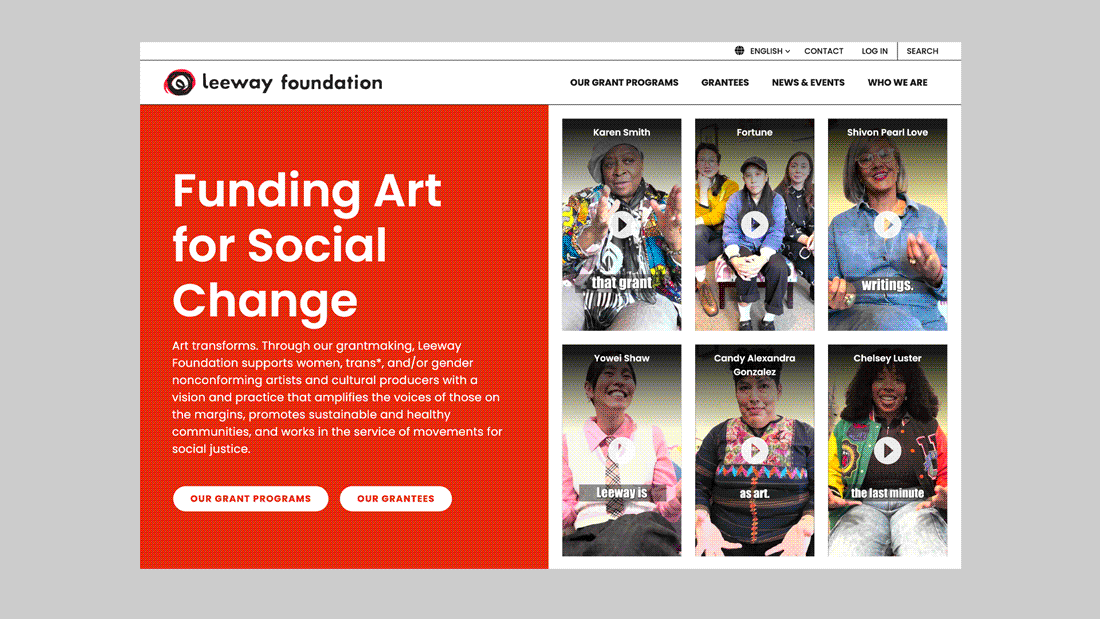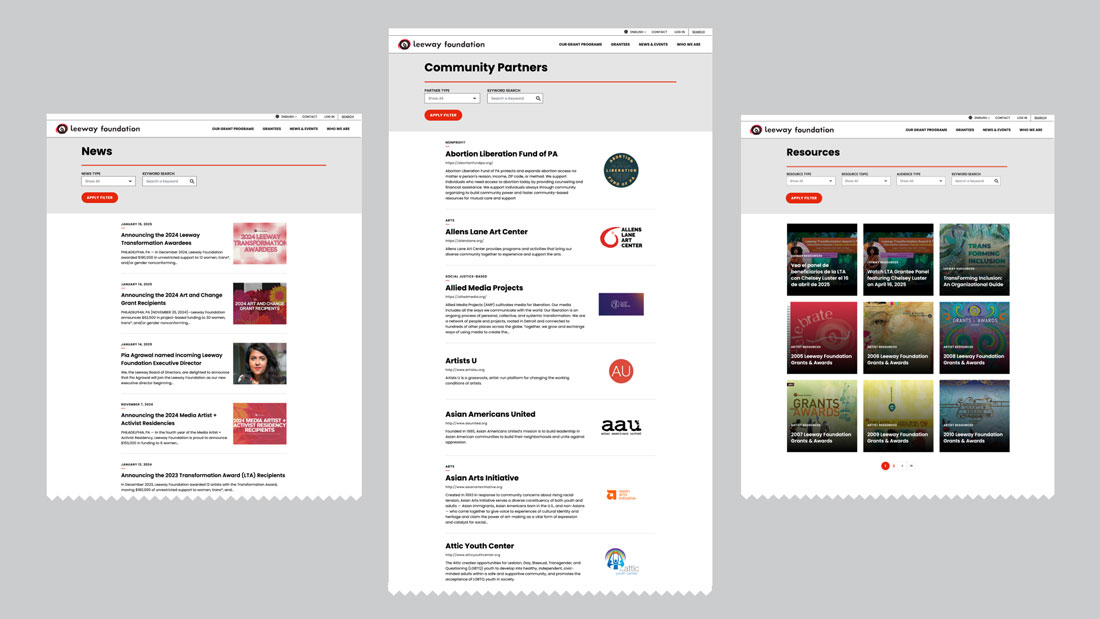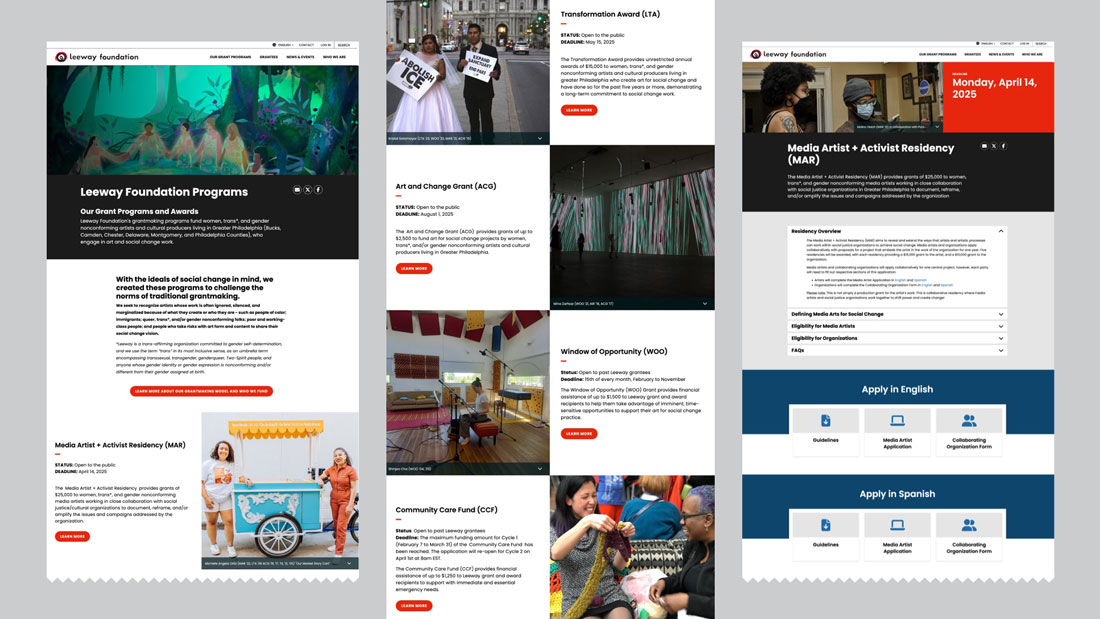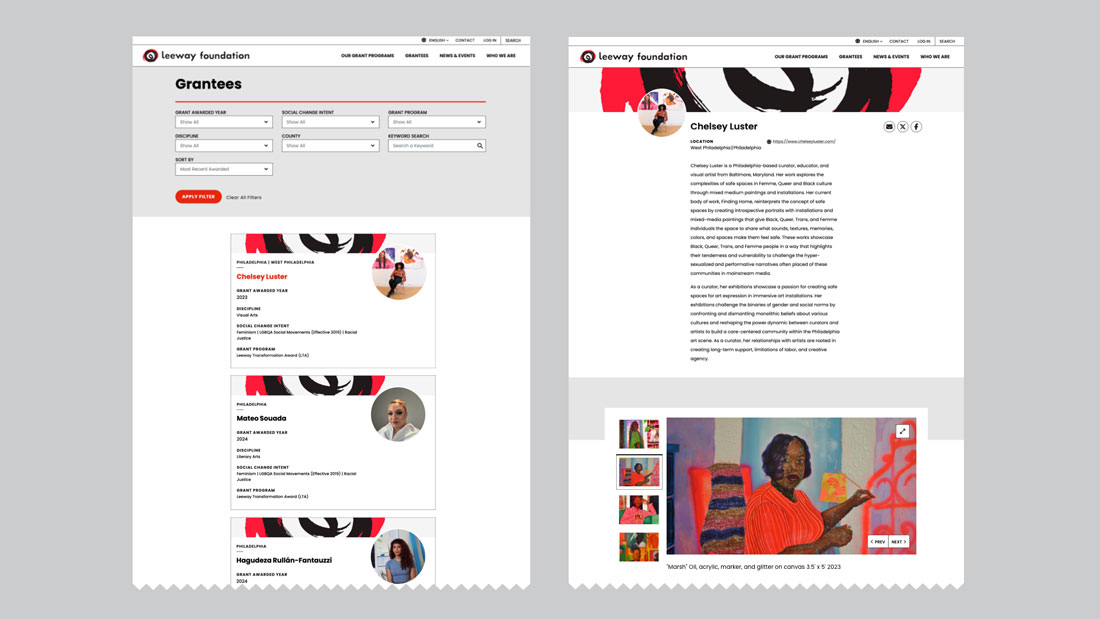Leeway Foundation
The Leeway Foundation supports women, trans*, and gender-nonconforming artists and cultural producers creating work at the intersection of art, culture, and social change. Through grants, events, and learning sessions, Leeway uplifts voices that are often marginalized and fosters a vibrant, justice-centered creative community across the Greater Philadelphia region.
Leeway partnered with Message Agency to transform their outdated website into an elegant, accessible, and flexible platform—one that centers the voices and stories of its artists and makes it easier for both applicants and staff to navigate and manage content.

The Challenge
While the existing website served as a central hub for grant information and grantee stories, it presented several barriers:
- Cluttered visual design made it difficult to understand or prioritize content.
- Cumbersome backend tools prevented staff from making even simple updates without developer intervention.
- Text-heavy pages buried critical information like application guidelines.
- Poor mobile responsiveness and outdated grantee profiles detracted from the site’s credibility.
- A confusing tagging system and lack of flexibility in templates hindered organic exploration and content updates.
- Most critically, the site failed to communicate the vibrancy of Leeway’s community and the transformative power of its grantees’ work.
Our Approach
We led with a content-first, human-centered approach that prioritized clarity, storytelling, and access. From the start, we aligned our strategy with five key goals:
- Tell Leeway’s story more effectively, amplifying the voices of the artists they support.
- Simplify the experience of applying for grants and residencies.
- Make key information easy to find for both new and returning visitors.
- Modernize the site’s look and feel to reflect the vibrancy of Leeway’s community and mission.
- Build a robust, flexible CMS that empowers Leeway staff to manage content independently.

Centering Artist Voices Through Rich Storytelling
To bring these goals to life, we began by reshaping the messaging and content strategy—not only to clarify Leeway’s mission but also to center the lived experiences of artists, many of whom are working at the margins. A key part of this effort was redesigning the homepage to feature video testimonials from grantees, partners, and community members. These powerful stories bring the intersection of art and activism to the forefront, offering a more authentic and engaging window into Leeway’s impact. Leeway can update and publish new stories as they are collected to keep the initial experience on the homepage fresh.
Enhancing the Grants Search and Grantee Profiles
Next, we turned our attention to one of the site’s most valuable tools: the grants search experience. We designed an intuitive interface that allows users to filter grants by keyword, discipline, social change intent, or program—making it easier than ever for prospective applicants to find relevant opportunities.
Behind the scenes, we built a grantee profile architecture that aggregates all grants awarded to an individual, helping users see how their work might align with others in the Leeway network. Staff can also relate grantees to one another to highlight collaboration and partnership, further reflecting the community-oriented nature of Leeway’s work.
Supporting Artists Beyond Grants
To showcase the breadth of Leeway’s support beyond funding, we developed content structures that elevate their learning sessions, events, and outreach. These elements not only help artists prepare stronger applications but also support their growth as arts professionals.
Our design introduced flexible content templates that accommodate time-sensitive updates—such as application deadlines and openings—while offering visually engaging, easy-to-navigate layouts.
Building a Flexible, User Friendly CMS
Finally, we overhauled the site’s backend, building a CMS that puts control in the hands of Leeway staff. With the ability to manage layouts, tagging, media, and related content directly, the team can now update the site quickly and confidently—reducing their reliance on developers and increasing their capacity to tell stories as they happen.

